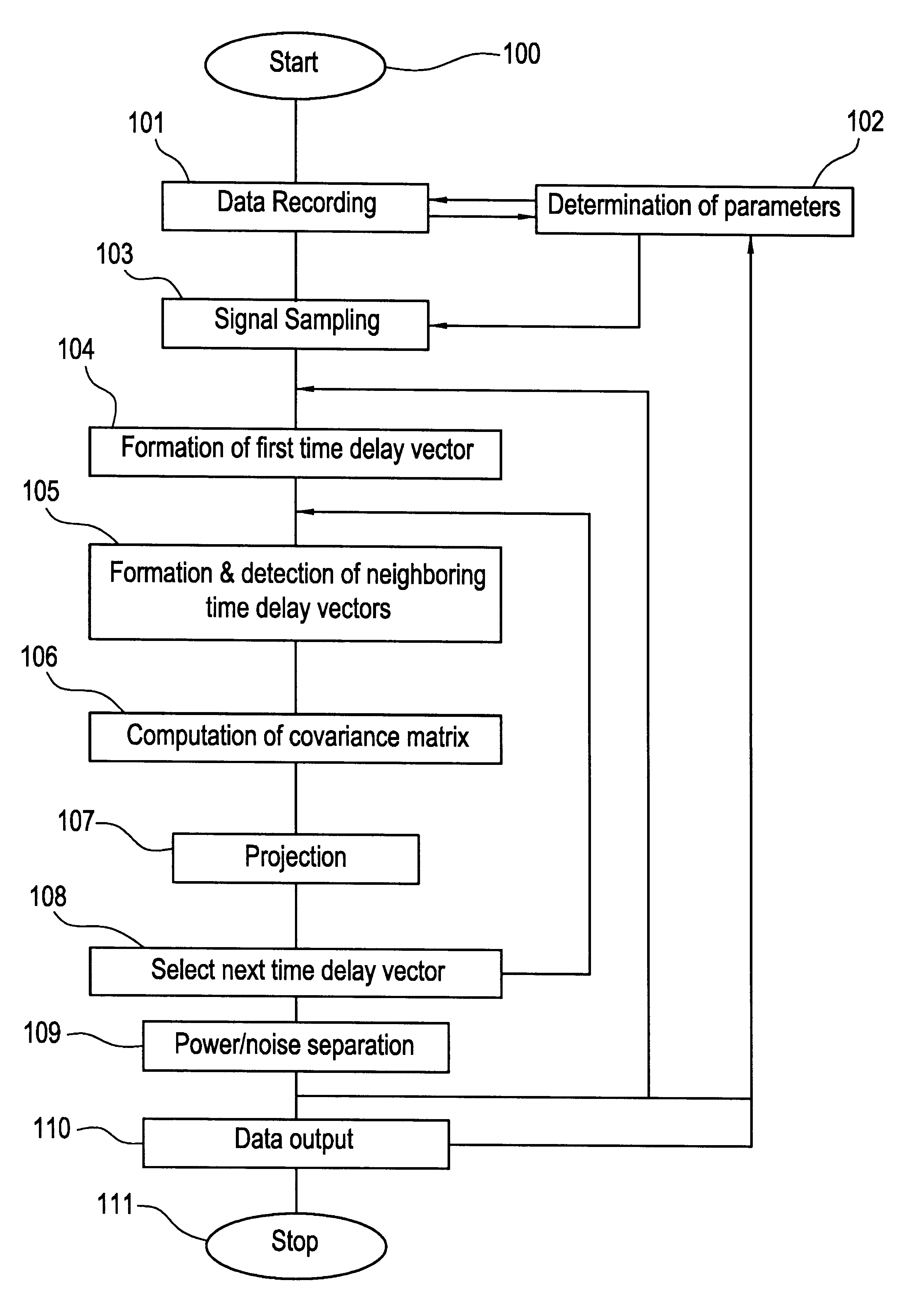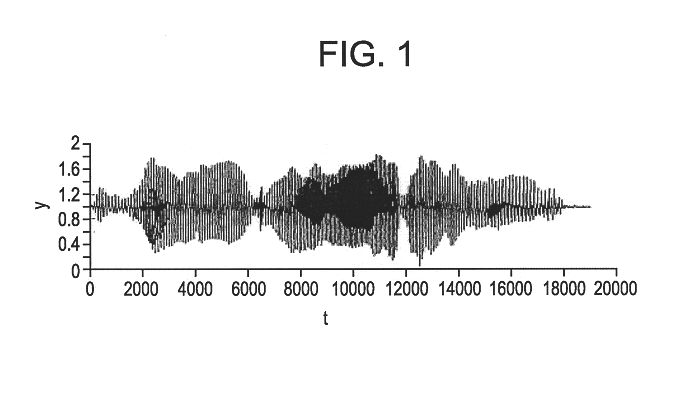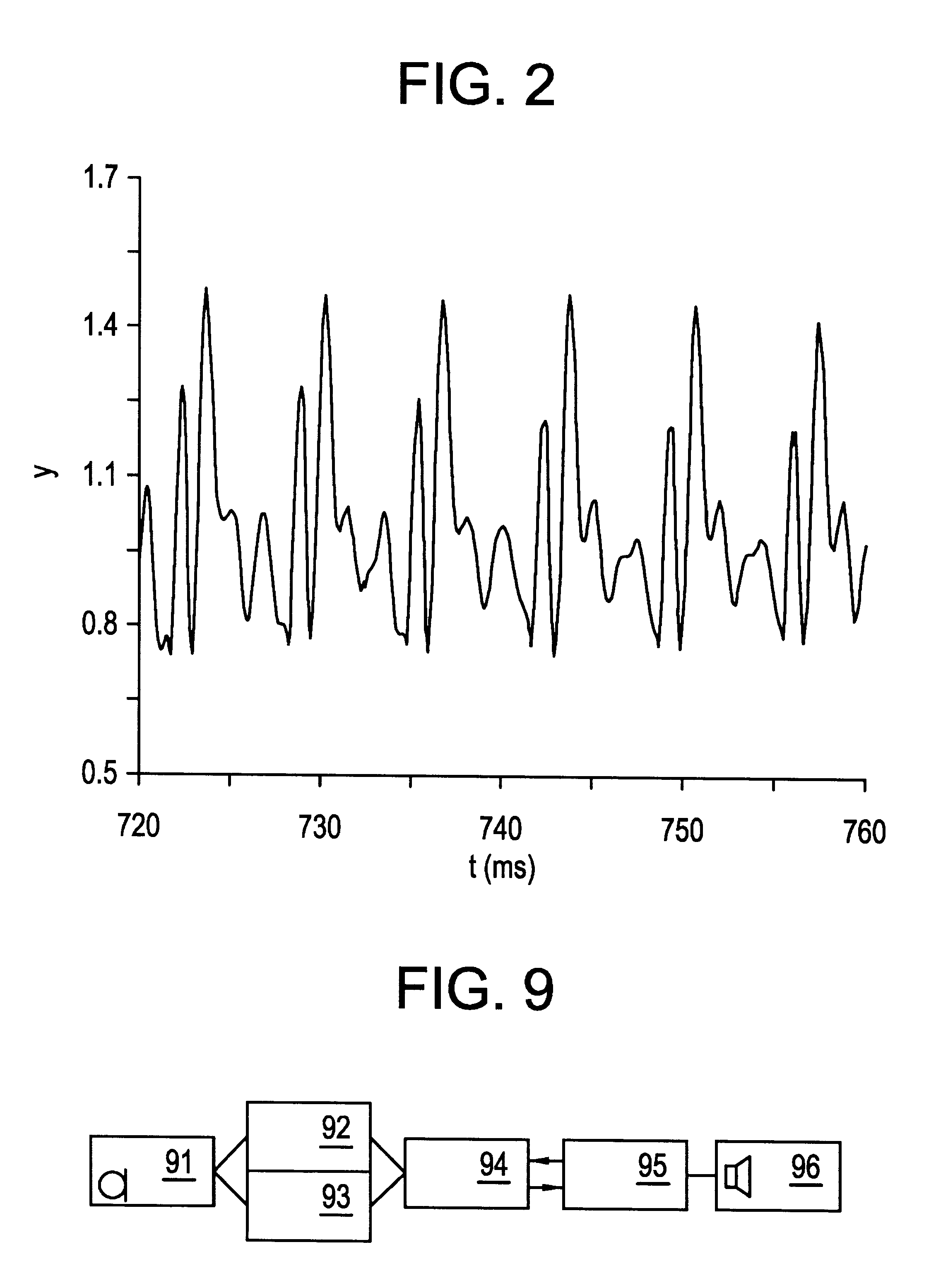Method and apparatus for processing noisy sound signals
a sound signal and noise processing technology, applied in the direction of transducer casings/cabinets/supports, electrical transducers, instruments, etc., can solve the problems of system unpredictable for a longer time, voice signal distortion, insufficient results, etc., and achieve the effect of increasing the performance of the procedure and high noise levels
- Summary
- Abstract
- Description
- Claims
- Application Information
AI Technical Summary
Benefits of technology
Problems solved by technology
Method used
Image
Examples
Embodiment Construction
In what follows the signal processing of the invention is illustrated in two examples. In the first example, the processed sound signal is a human whistle (see FIGS. 4a-c). The second example focuses on the above mentioned words "buon giorno" (see FIGS. 5 through 8).
FIGS. 4a-c shows the power spectrum for a human whistle lasting 3 s. A whistle is in effect aperiodic signal with characteristic harmonics and only few non-stationarities. FIG. 4a shows the power spectrum of the original recording. Numerical addition of 10% noise produces the spectrum presented in FIG. 4b. In the time domain, this delivers the input data for step 101 of the process (FIG. 3). After noise reduction according to the invention, the power spectrum of the new time series is as shown in FIG. 4c. This shows the complete restoration of the original, noise-free signal from FIG. 4a. FIGS. 4a through 4c demonstrate a special advantage of the invention compared to a conventional filter in the frequency domain. A filt...
PUM
 Login to View More
Login to View More Abstract
Description
Claims
Application Information
 Login to View More
Login to View More - R&D
- Intellectual Property
- Life Sciences
- Materials
- Tech Scout
- Unparalleled Data Quality
- Higher Quality Content
- 60% Fewer Hallucinations
Browse by: Latest US Patents, China's latest patents, Technical Efficacy Thesaurus, Application Domain, Technology Topic, Popular Technical Reports.
© 2025 PatSnap. All rights reserved.Legal|Privacy policy|Modern Slavery Act Transparency Statement|Sitemap|About US| Contact US: help@patsnap.com



